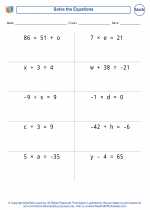Cubic Polynomial
A cubic polynomial is a polynomial of degree 3, meaning the highest power of the variable in the polynomial is 3. The general form of a cubic polynomial is:
f(x) = ax3 + bx2 + cx + d
Where a, b, c, and d are constants, and a ≠ 0. The graph of a cubic polynomial is a curve that can have up to two turns, and it may go both above and below the x-axis.
Key Concepts
- Leading Coefficient: The coefficient "a" in the term ax3 is called the leading coefficient of the cubic polynomial. It determines the end behavior of the graph.
- Roots/Zeros: The roots or zeros of a cubic polynomial are the values of x for which the polynomial equals zero. A cubic polynomial can have up to 3 real or complex roots.
- Turning Points: A cubic polynomial can have up to 2 turning points, where the graph changes direction.
- End Behavior: The end behavior of the graph of a cubic polynomial is determined by the leading coefficient "a". If "a" is positive, the graph rises to the left and rises to the right. If "a" is negative, the graph falls to the left and falls to the right.
How to Solve and Graph Cubic Polynomials
To solve and graph a cubic polynomial, you can follow these steps:
- Find the Roots: Set the polynomial equal to zero and solve for x to find the roots of the cubic polynomial. You can use factoring, the quadratic formula, or synthetic division to find the roots.
- Identify Turning Points: Determine the turning points of the cubic polynomial by finding the x-coordinate of the vertex, where the derivative of the polynomial is zero.
- Plot Points and Sketch Curve: Use the roots and turning points to plot points on the graph and sketch the curve of the cubic polynomial, showing its behavior as it approaches the x-axis.
Example
Let's consider the cubic polynomial f(x) = 2x3 - 3x2 - 11x + 6. We can follow the steps above to solve and graph the polynomial.
Step 1: Find the Roots
Setting the polynomial equal to zero, we can use factoring or the quadratic formula to find the roots of the polynomial.
Step 2: Identify Turning Points
By finding the x-coordinate of the vertex, we can determine the turning points of the polynomial.
Step 3: Plot Points and Sketch Curve
Using the roots and turning points, we can plot points on the graph and sketch the curve of the polynomial to show its behavior.
.◂Math Worksheets and Study Guides Sixth Grade. One & Two Step Equations
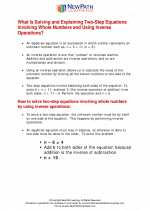
 Worksheet/Answer key
Worksheet/Answer key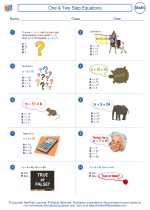
 Worksheet/Answer key
Worksheet/Answer key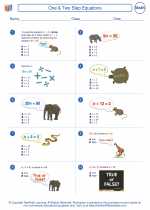
 Worksheet/Answer key
Worksheet/Answer key
 Worksheet/Answer key
Worksheet/Answer key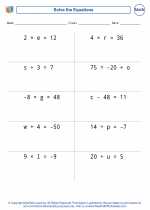
 Worksheet/Answer key
Worksheet/Answer key